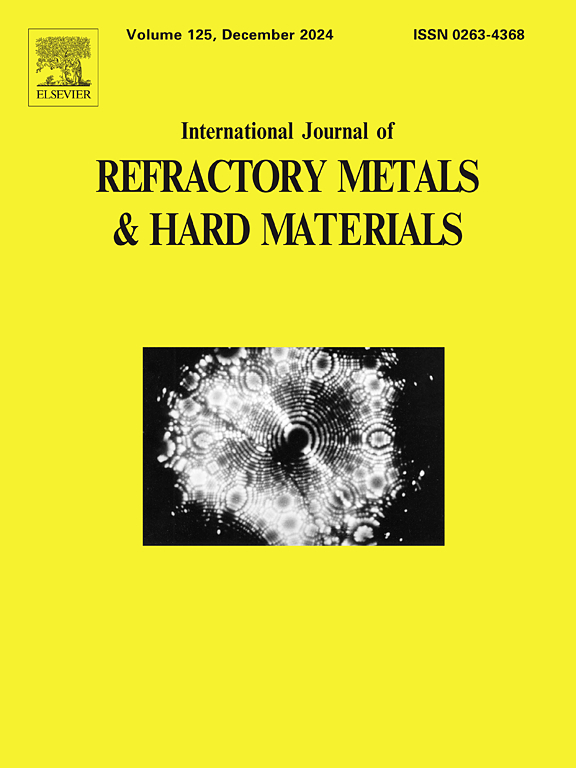A review on the progress in cobalt removal for PDC
IF 4.2
2区 材料科学
Q2 MATERIALS SCIENCE, MULTIDISCIPLINARY
International Journal of Refractory Metals & Hard Materials
Pub Date : 2025-03-06
DOI:10.1016/j.ijrmhm.2025.107136
引用次数: 0
Abstract
As an excellent super-hard composite cutting tool material, polycrystalline diamond composite (PDC) is widely utilized in various fields such as coal geology, oil drilling and gas extraction. However, one of the main reason for its subsequent failure is the use of cobalt, which is the most commonly used metal binder during its sintering process. In recent years, researchers have conducted studies on the methods and effects of cobalt removal after sintering. This review summarizes the studies on the role and influence of cobalt in the PDC's fabrication process as well as the researches on the progress of cobalt removal from the upper layer of PDC through acid leaching or electrolysis methods. Moreover, the effects after cobalt removal on wear resistance, thermal stability and impact toughness have been discussed. The review provides a comprehensive overview of experimental results and insights derived from studies on cobalt removal of PDC over the past dozen years. The focus is on the technologies, solution formulas of cobalt removal, and the relationship between the depth and performance of PDC after cobalt removal. It is crucial to optimize these parameters for achieving efficient and precise cobalt removal, thereby optimizing the performance of PDC.
PDC脱钴技术进展综述
聚晶金刚石复合材料(PDC)作为一种优异的超硬复合刀具材料,广泛应用于煤炭地质、石油钻井、天然气开采等各个领域。然而,其后续失效的主要原因之一是使用了钴,钴是其烧结过程中最常用的金属粘结剂。近年来,研究人员对烧结后除钴的方法和效果进行了研究。本文综述了钴在PDC制备过程中的作用和影响,以及通过酸浸或电解等方法去除PDC上层钴的研究进展。此外,还讨论了脱钴后对合金耐磨性、热稳定性和冲击韧性的影响。综述了近十几年来PDC脱钴研究的实验结果和见解。重点介绍了除钴工艺、除钴溶液配方以及除钴后PDC深度与性能的关系。优化这些参数对于实现高效、精确的钴去除至关重要,从而优化PDC的性能。
本文章由计算机程序翻译,如有差异,请以英文原文为准。
求助全文
约1分钟内获得全文
求助全文
来源期刊
CiteScore
7.00
自引率
13.90%
发文量
236
审稿时长
35 days
期刊介绍:
The International Journal of Refractory Metals and Hard Materials (IJRMHM) publishes original research articles concerned with all aspects of refractory metals and hard materials. Refractory metals are defined as metals with melting points higher than 1800 °C. These are tungsten, molybdenum, chromium, tantalum, niobium, hafnium, and rhenium, as well as many compounds and alloys based thereupon. Hard materials that are included in the scope of this journal are defined as materials with hardness values higher than 1000 kg/mm2, primarily intended for applications as manufacturing tools or wear resistant components in mechanical systems. Thus they encompass carbides, nitrides and borides of metals, and related compounds. A special focus of this journal is put on the family of hardmetals, which is also known as cemented tungsten carbide, and cermets which are based on titanium carbide and carbonitrides with or without a metal binder. Ceramics and superhard materials including diamond and cubic boron nitride may also be accepted provided the subject material is presented as hard materials as defined above.

 求助内容:
求助内容: 应助结果提醒方式:
应助结果提醒方式:


